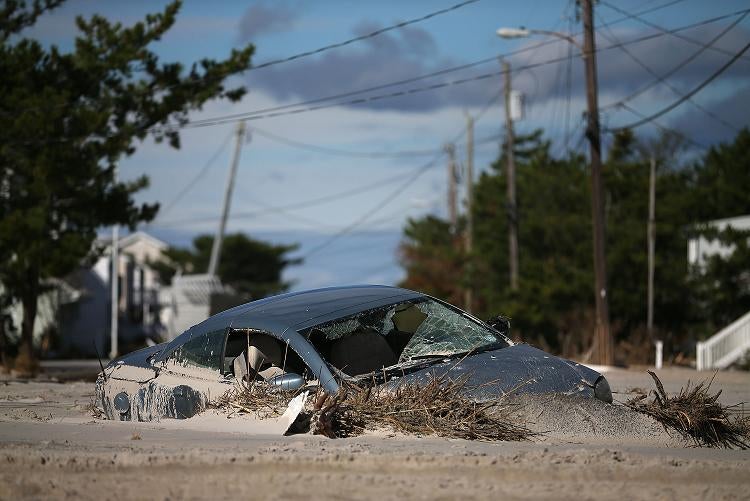New York City tries to come back life amid storm chaos

Your support helps us to tell the story
From reproductive rights to climate change to Big Tech, The Independent is on the ground when the story is developing. Whether it's investigating the financials of Elon Musk's pro-Trump PAC or producing our latest documentary, 'The A Word', which shines a light on the American women fighting for reproductive rights, we know how important it is to parse out the facts from the messaging.
At such a critical moment in US history, we need reporters on the ground. Your donation allows us to keep sending journalists to speak to both sides of the story.
The Independent is trusted by Americans across the entire political spectrum. And unlike many other quality news outlets, we choose not to lock Americans out of our reporting and analysis with paywalls. We believe quality journalism should be available to everyone, paid for by those who can afford it.
Your support makes all the difference.New York City struggled to return to normal life after superstorm Sandy, managing a partial resumption of mass transit amid a landscape of miles-long traffic jams, widespread blackouts and swarms of marooned residents.
Limited service on the Metro-North and Long Island Rail Road commuter trains began Wednesday, and service on 14 of 23 subway lines will resume Thursday, Gov. Andrew Cuomo, D, said at a news briefing in Manhattan. Still, power losses kept thousands of people and businesses in the dark and prevented trains from running below 34th Street in Manhattan. Basements and homes were waterlogged or submerged, and 6,300 remained in shelters.
The most populous US city is reeling after being slammed Monday by record tidal surges. Sandy, the largest tropical system measured in the Atlantic, ignited a conflagration that destroyed 111 homes, inundated rail and car tunnels of the biggest U.S. transit system and left at least 30 New Yorkers dead. More than 640,000 customers were still without power.
"I've never seen New York like that before, and it was really disturbing," said Cuomo, 54. He surveyed the damage by helicopter Wednesday with federal and state officials and called the experience "frightening."
As businesses reopened, many workers were scrambling for shelter in overbooked hotels and searching for Wi-Fi connections and flushable toilets. Mass transit remained hobbled by the worst flooding in its history, forcing commuters to improvise and arrive at work by foot, bike, bus or car.
Traffic on Queens Boulevard was backed up to Forest Hills as drivers tried to get to the Ed Koch Queensboro Bridge, the only span that connects Queens to Manhattan. It took Taulant Kodi two hours to get from his home in Jamaica Estates to Queens Boulevard and 52nd Street in Elmhurst. He estimated it would take another hour to get to the bridge.
"It's a parking lot; it's a nightmare," said Kodi, 40. "Why are they making people go in when there's no public transportation?"
The worst disaster in the 108-year history of the subway system exceeded the worst-case scenario. Officials began offering free bus service Tuesday. Even that caused problems: Buses were packed with riders who typically used the subway, said Joseph Lhota, chairman of the Metropolitan Transportation Authority. He pegged the lost revenue at $18 million a day for the agency, which is already under financial stress.
The lack of transit options is unprecedented, said Bernie Wagenblast, who has monitored metro traffic for more than 30 years, including stints as a radio reporter on WABC and WINS.
"It reminds me a little of back in the '70s when we had the gas crisis and cars were lined up for long, long distances trying to get gasoline," Wagenblast said. "Now you've got cars in addition to people with their gas cans waiting on line who are trying to get fuel."
To reduce congestion, Mayor Michael Bloomberg announced that East River bridges and the Lincoln Tunnel will be restricted to vehicles carrying at least three occupants from 6 a.m. to midnight Thursday. The mayor is the founder and majority owner of Bloomberg News parent Bloomberg LP.
"Today our streets had too much traffic; yesterday there was none," Bloomberg told reporters Wednesday. "I suppose that's progress — unless you're driving."
In Manhattan, an unofficial line divided the haves with power from the have-nots. South of about 34th Street, far fewer shops or restaurants than usual were open. Traffic lights were inoperable, though an unspoken etiquette emerged as many drivers took turns letting one another pass through intersections.
Work stopped at the Ground Zero construction site, which is still flooded. LaGuardia Airport, the only one of the three major New York-area airports that remains closed, can't resume flights until floodwaters are drained and ground lights and equipment are checked.
No date has been set for reopening LaGuardia, said Ron Marsico, a spokesman for the Port Authority of New York & New Jersey, which runs the airport as well as John F. Kennedy and Newark Liberty. Those two airports began limited flights this morning.
Bloomberg said 500 patients had to evacuate Bellevue Hospital on Manhattan's East Side. The facility joined Coney Island Hospital and New York University Langone Medical Center, which also had to relocate patients due to power failures.
As in other areas along the East Coast, the storm has delayed the processing of absentee ballots as Board of Elections offices in Manhattan and Staten Island remained closed, according to its website.
On a positive note, Bloomberg said the ING New York City Marathon will be held as scheduled on Sunday. More than 47,000 runners are scheduled to compete.
— With assistance from Martin Z. Braun, Victoria Stilwell, Michelle Kaske and Chris Dolmetsch in New York.
Join our commenting forum
Join thought-provoking conversations, follow other Independent readers and see their replies
Comments